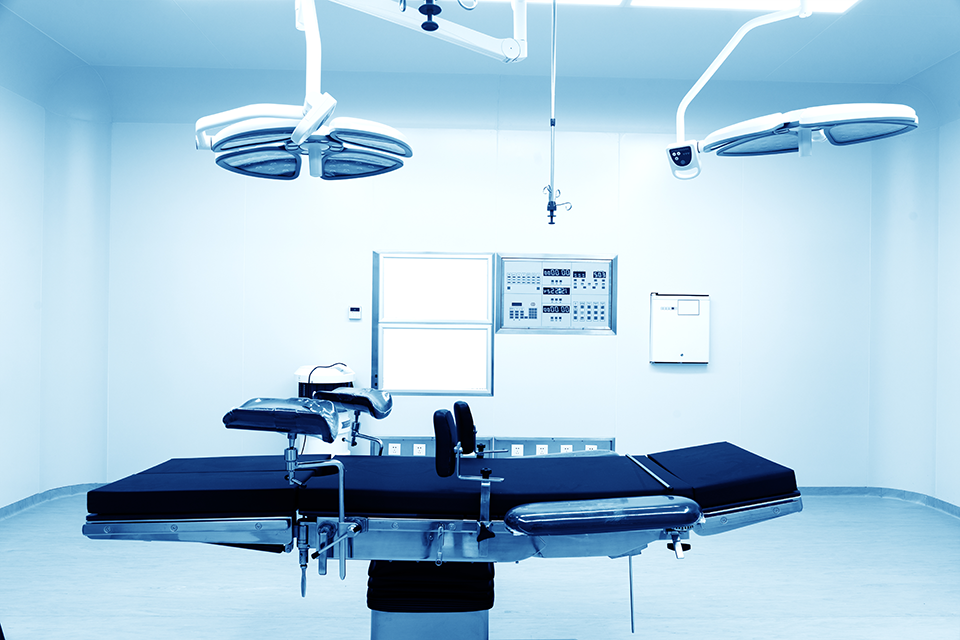4 Functions of Surgical Table Pads in the Operating Room
Surgical table padsare indispensable in the operating room, functioning not only as a supportive surface for patients but also as a crucial element...
Table pads are a vital component of the operating room, serving as more than just a surface for patients. They are a crucial tool in ensuring patient safety and comfort during procedures. In this blog post, we will delve into the significance of table pads and why they are a fundamental necessity in any operating room setting.
Table pads are a critical component in the operating room, providing essential support to patients and helping to alleviate pressure on their bodies. By offering sufficient cushioning and support, these pads play a key role in distributing the patient's weight evenly, reducing the risk of pressure ulcers and nerve damage during procedures. Ensuring that the pads are well-padded and properly positioned is crucial in maintaining patient comfort and safety throughout the process. With the right table pads, healthcare providers can create a supportive and secure environment for patients, ultimately enhancing the overall experience and promoting positive outcomes.
 Comfort
ComfortPatients often enter the operating room with a mix of emotions, ranging from nervous anticipation to fear of the unknown. These pre-procedure jitters can heighten their anxiety levels and contribute to a sense of discomfort. However, the presence of soft and cushioned table pads offers more than just physical relief. The gentle surface not only cradles the patient's body but also provides a reassuring touch, easing their nerves and promoting a sense of calmness.
As patients lie on the table pads, they experience a gentle embrace that helps them relax and unwind. The cushioned material acts as a protective barrier, preventing any friction or discomfort against their skin. This barrier not only enhances physical comfort but also creates a psychological shield, shielding patients from unnecessary stress and worry. By enveloping patients in a cocoon of comfort, table pads play a crucial role in cultivating a tranquil environment that encourages relaxation and peace of mind.
Furthermore, the soothing presence of table pads goes beyond just physical comfort. It serves as a silent companion, offering a sense of security and support to patients during a vulnerable moment. The soft padding acts as a buffer against the harshness of the surgical table, providing a sanctuary of comfort amidst the clinical surroundings. This sanctuary allows patients to let go of their apprehensions and anxieties, paving the way for a smoother and more positive surgical experience.
In essence, table pads act as more than just a surface for patients; they are a source of solace and tranquility in the midst of medical procedures. By creating a peaceful and comfortable environment, these pads contribute to a holistic approach to patient care, addressing both physical and emotional needs. Ultimately, the presence of table pads enhances the overall surgical experience, fostering a sense of well-being and relaxation that can positively impact patient outcomes.
Furthermore, the antimicrobial properties of table pads play a crucial role in upholding the highest standards of cleanliness and infection control in the operating room. These specialized pads are crafted to repel fluids and thwart the infiltration of harmful pathogens, creating a protective shield against potential contaminants. By incorporating antimicrobial technology into the design of table pads, healthcare facilities can effectively reduce the risk of cross-contamination and uphold a pristine and sterile environment.
The ability of table pads to withstand fluids and resist bacterial growth is paramount in mitigating the transmission of infections. In a healthcare setting where the prevention of healthcare-associated infections is of utmost importance, these pads serve as a frontline defense mechanism. Their antimicrobial properties not only safeguard patients undergoing procedures but also protect healthcare professionals working in the operating room. By implementing table pads with antimicrobial features, healthcare facilities can enhance patient safety, minimize the risk of infections, and promote a swift and uncomplicated recovery process.
In essence, the antimicrobial capabilities of table pads are not just a feature but a critical component in the overall framework of infection control measures. By investing in high-quality table pads that prioritize hygiene and cleanliness, healthcare providers can create a secure and healthy environment for both patients and staff. This proactive approach to infection prevention not only ensures optimal outcomes for patients but also underscores a commitment to excellence in patient care and safety.
Moreover, proper patient positioning is essential not only for the safety of the patient but also for the success of the procedure itself. Surgeons rely on precise positioning to access the surgical site with accuracy and efficiency, minimizing the risk of errors or complications. Table pads serve as a reliable foundation, ensuring that the patient remains stable and secure throughout the procedure. By providing support for key body parts such as the head, shoulders, and extremities, these pads help to maintain the patient's alignment and posture, allowing the surgical team to work with precision and confidence.
In addition, table pads can be customized to accommodate specific positioning requirements for different types of procedures. For example, orthopedic procedures may necessitate specialized padding to support the patient's limbs in the desired positions, while spinal surgeries may require additional padding for optimal spinal alignment. By tailoring the pads to the unique needs of each surgical case, healthcare providers can enhance safety, efficiency, and overall outcomes in the operating room. Ultimately, proper patient positioning facilitated by high-quality table pads is an essential aspect of delivering exceptional care and achieving successful surgical results.
When it comes to table pads, there is a wide array of sizes and shapes available to accommodate different types of tables. These pads can also be tailored to suit specific procedures or the individual needs of patients. For instance, bariatric patients may benefit from wider and sturdier pads to support their size and weight, while pediatric surgeries might require smaller, more contoured pads to provide optimal comfort for young patients.
In addition to size and shape, the material of the pad is a crucial consideration. Foam pads are a cost-effective option that offers effective support for most patients and procedures. However, for longer procedures or patients at a higher risk of pressure ulcers, memory foam pads are often the preferred choice. Memory foam excel in redistributing pressure evenly and conforming to the patient's body, offering superior support and reducing the likelihood of pressure-related injuries.
Table pads are an indispensable element in the operating room, playing a pivotal role in the success of surgical procedures. It is imperative to invest in top-quality surgical table pads that align with the specific needs and standards of your facility. It is also important to replace your table pads when they show signs of aging. By prioritizing the selection of the right pads, you can ensure the utmost care for your patients, promoting their safety and comfort.

Surgical table padsare indispensable in the operating room, functioning not only as a supportive surface for patients but also as a crucial element...

Operating room table pads play a vital role in the surgical suite, offering patients a secure and comfortable surface during procedures. These pads...

In the intricate world of surgical procedures, every detail counts. Surgical table accessories play a crucial role in ensuring both the safety and...